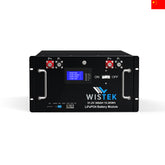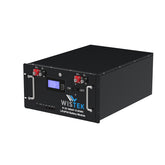What Is the Typical Voltage of an AGV Battery
What Is the Typical Voltage of an AGV Battery
Automated Guided Vehicles (AGVs) have become essential in modern logistics, warehousing, and manufacturing. At the heart of every AGV is its battery system, which powers the vehicle’s motion, sensors, and communications. One of the most common questions from operators and engineers alike is: What is the typical voltage of an AGV battery? Understanding AGV battery voltage is crucial for selecting the right system, ensuring safety, and maximizing efficiency. In this guide, we’ll explore voltage ranges, configurations, applications, and how AGV battery voltage affects performance and compatibility.
- Understanding the Basics of AGV Battery Voltage
- Common Voltage Levels in AGV Battery Systems
- Factors Influencing AGV Battery Voltage Choice
- Battery Chemistry and Its Impact on AGV Battery Voltage
- How AGV Battery Voltage Affects Performance
- AGV Battery Voltage and Charging Systems
- Safety Considerations of AGV Battery Voltage
- Voltage Monitoring and Maintenance of AGV Batteries
- Custom AGV Battery Voltage Configurations
- AGV Battery Voltage Standards and Regulations
- Future Trends in AGV Battery Voltage and Technology
- Comparing AGV Battery Voltage Across Brands
Understanding the Basics of AGV Battery Voltage
What Is an AGV Battery?
An AGV battery is a rechargeable energy storage system used to power automated guided vehicles in industrial environments. These batteries are responsible not just for propulsion but also for supporting onboard computing, lifting mechanisms, sensors, and wireless communication modules.
Why Voltage Matters in AGV Batteries
Voltage in an AGV battery determines how much electrical potential the battery can provide. It impacts:
- The motor's power output
- Operating efficiency
- Battery life and recharging time
- System compatibility with inverters and control units
Common Voltage Levels in AGV Battery Systems
Typical Voltage Ranges
Most AGV batteries fall into one of the following standard voltage categories:
- 24V – Found in smaller AGVs or light-duty applications
- 36V – Less common, used in intermediate systems
- 48V – Most popular for mid-sized AGVs
- 72V and 80V – High-power systems for large AGVs with demanding tasks
- 96V or higher – Industrial-grade AGVs requiring extended runtime and power
Why 48V Is the Most Common
The 48V AGV battery strikes a balance between performance, safety, and compatibility. It provides sufficient power for most mid-sized applications while remaining within safe voltage limits for human interaction and BMS (Battery Management System) design.
>>See also How ESS and BESS Differ A Complete Guide
Factors Influencing AGV Battery Voltage Choice
Size and Weight of the AGV
Larger AGVs require higher-voltage AGV batteries to move their heavier frames and loads efficiently.
Operational Requirements
AGVs with long shift durations or continuous operation benefit from higher voltage levels, such as 72V or 80V, due to improved energy efficiency.
Charging Infrastructure
Facilities equipped for rapid charging may opt for higher-voltage AGV battery systems to reduce charging times and increase productivity.
Battery Chemistry
Lithium-ion AGV batteries tend to offer more flexible voltage configurations compared to lead-acid alternatives, allowing for higher energy density and voltage optimization.
Battery Chemistry and Its Impact on AGV Battery Voltage
Lead-Acid AGV Batteries
- Typically available in 24V, 36V, and 48V configurations
- Heavier and less energy-dense
- Slower charging time
- Lower cycle life (500–1,000 cycles)
Lithium-Ion AGV Batteries
- Available from 24V to 96V and beyond
- Lightweight, fast-charging
- Higher energy density and longer life (2,000–5,000+ cycles)
- Require integrated BMS to monitor voltage, temperature, and safety
How AGV Battery Voltage Affects Performance
Speed and Torque
Higher AGV battery voltage typically provides more power to motors, increasing speed and load capacity. This is crucial in time-sensitive environments like e-commerce or automotive logistics.
Efficiency and Heat Generation
Operating at higher voltages allows for lower current, which reduces resistance and heat loss—improving the overall efficiency of the AGV system.
Runtime and Cycle Longevity
While voltage alone doesn’t determine runtime, it affects how efficiently the energy is used. When paired with appropriate capacity (Ah), higher voltage can extend working hours.
AGV Battery Voltage and Charging Systems
Charging Compatibility
Charging systems must match the voltage of the AGV battery precisely. Mismatched voltage can result in slow charging, overcharging, or even damage.
Smart Charging and BMS Integration
Advanced AGV battery systems include smart chargers that communicate with the BMS to manage voltage levels, charge rates, and safety thresholds.
Safety Considerations of AGV Battery Voltage
Human Safety
Most AGVs are designed to operate below 60V to minimize shock risk. While higher voltages improve performance, they introduce greater safety concerns and must be handled with proper insulation and training.
System Safety
Battery overvoltage or undervoltage can damage control units, motors, and sensors. Therefore, BMS must continuously regulate and balance voltage across cells.
Voltage Monitoring and Maintenance of AGV Batteries
Importance of Voltage Monitoring
Continuous voltage monitoring helps prevent over-discharge or overcharge, both of which shorten AGV battery life and can cause system failures.
Tools and Techniques
- Onboard voltage meters
- BMS dashboards with real-time data
- Scheduled voltage audits as part of preventive maintenance
Custom AGV Battery Voltage Configurations
Tailored Solutions for Niche Applications
Some AGV systems require custom battery packs with non-standard voltages, especially for specialty industries like medical automation, semiconductor fabrication, or cleanroom logistics.
Modular Battery Designs
Many lithium-ion AGV battery systems are modular, allowing voltage to be scaled up or down based on specific needs by adding or removing cells.
>>See also How Group 21 and Group 21R Batteries Compare
AGV Battery Voltage Standards and Regulations
Compliance Requirements
- ISO 3691-4: Safety requirements for driverless industrial trucks
- UN38.3: Transport safety certification for lithium batteries
- IEC 62619: Lithium battery safety standard for industrial use
Implications for Voltage Design
Designing an AGV battery must take into account both performance and legal compliance, particularly for international shipping and workplace safety.
Future Trends in AGV Battery Voltage and Technology
Higher Voltage, Smaller Size
As battery technology improves, we can expect higher-voltage AGV batteries in smaller and more compact form factors, reducing overall AGV weight and increasing maneuverability.
Integration with Wireless Charging
Wireless charging systems are being developed for 48V and 72V AGV battery systems, promising faster, more seamless recharging between tasks.
AI-Powered Voltage Optimization
Future BMS platforms may use AI to dynamically adjust battery voltage based on load, environment, and energy demand, improving efficiency and extending battery life.
Comparing AGV Battery Voltage Across Brands
|
Brand |
Standard Voltages |
Battery Type |
Typical Applications |
|
Jungheinrich |
24V, 48V, 80V |
Lithium-Ion |
Warehousing, pallet movement |
|
Toyota Lifter |
24V, 48V |
Lead-Acid, Li |
Picking, light material handling |
|
MiR Robots |
48V, 72V |
Lithium-Ion |
Collaborative robots |
|
AGILOX |
48V |
Lithium-Ion |
Smart mobile robots |
This table shows how various brands standardize their AGV battery voltage options to meet specific industrial needs.
























Leave a comment
All blog comments are checked prior to publishing